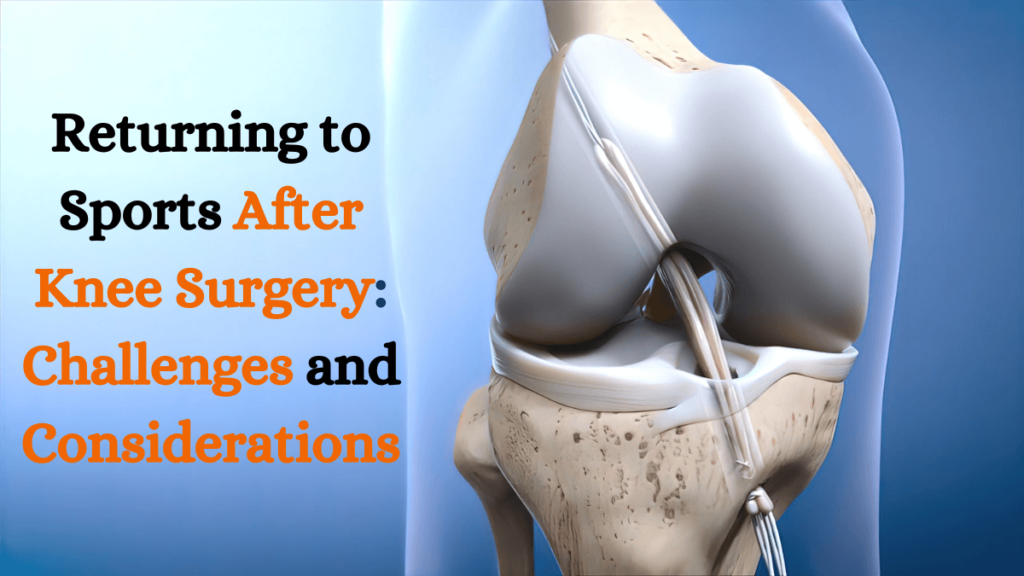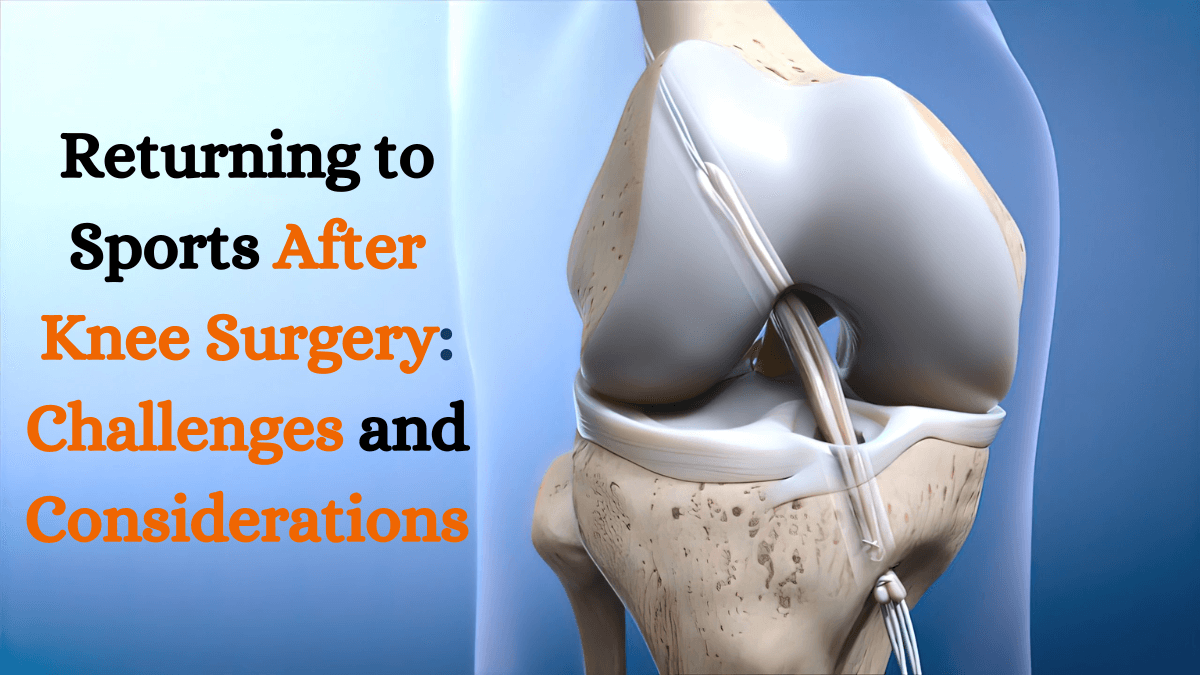Searching to know about how to Returning to Sports After Knee Surgery? Knee surgery can be a daunting prospect for athletes, as it often brings a temporary halt to their participation in sports and physical activities. However, for many athletes, surgery is a necessary step towards healing and regaining optimal function. Returning to sports after knee surgery involves overcoming challenges and considering various factors to ensure a safe and successful comeback. In this blog post, we’ll explore the journey of returning to sports after knee surgery, highlighting the challenges athletes may face and important considerations for a smooth transition back to their athletic endeavors.

Understanding Knee Surgery
Knee surgery encompasses a range of procedures, including ACL reconstruction, meniscus repair, cartilage restoration, and knee arthroscopy. These surgeries are typically performed to address injuries or conditions such as ligament tears, cartilage damage, or degenerative joint disease. While surgery is often necessary to repair structural damage and restore stability to the knee, the road to recovery can be demanding and requires patience, dedication, and careful planning.
Challenges Faced by Athletes
Returning to sports after knee surgery presents several challenges, both physical and psychological, that athletes must navigate:
- Physical Rehabilitation: Following knee surgery, athletes undergo a comprehensive rehabilitation program aimed at restoring range of motion, strength, stability, and functional abilities. Physical therapy sessions, exercises, and gradual progression of activities are essential components of the rehabilitation process.
- Fear of Reinjury: Fear of reinjury is common among athletes returning to sports after knee surgery, particularly those who have undergone procedures like ACL reconstruction. Overcoming this fear requires building confidence in the rehabilitated knee through progressive training, proper technique, and mental resilience.
- Muscle Weakness and Imbalances: Surgery and immobilization can lead to muscle weakness, imbalance, and decreased proprioception around the knee joint. Addressing these deficits through targeted strengthening exercises, balance training, and neuromuscular re-education is crucial for restoring optimal function and reducing the risk of reinjury.
- Gradual Return to Activity: Rushing the return to sports can increase the risk of complications and reinjury. Athletes must adhere to a structured return-to-sport protocol developed in collaboration with their healthcare team, gradually reintroducing sports-specific activities while monitoring for signs of fatigue, pain, or instability.
- Psychological Factors: Knee surgery and the subsequent rehabilitation process can take a toll on an athlete’s mental well-being, leading to frustration, anxiety, and uncertainty about their future in sports. Building a strong support network, setting realistic goals, and maintaining a positive mindset are essential for overcoming psychological challenges and staying motivated throughout the recovery journey.
Considerations for a Successful Return
To facilitate a successful return to sports after knee surgery, athletes should consider the following factors:
- Comprehensive Evaluation: Before returning to sports, athletes should undergo a comprehensive evaluation by their healthcare team, including orthopedic surgeons, physical therapists, and sports medicine professionals, to ensure that the knee is fully healed and ready for the demands of athletic activity.
- Functional Testing: Functional testing, such as agility drills, jump tests, and sport-specific movements, can help assess the athlete’s readiness to return to sports and identify any remaining deficits that need to be addressed.
- Sport-Specific Training: Gradually reintroducing sport-specific drills, techniques, and conditioning exercises is essential for preparing the athlete’s body for the rigors of their sport. Coaches and trainers should collaborate with physical therapists to develop a tailored training program that addresses the athlete’s specific needs and goals.
- Equipment and Protective Gear: Athletes should ensure they have appropriate equipment and protective gear, such as knee braces or supportive taping, to provide stability and reduce the risk of reinjury during sports participation.
- Listen to Your Body: Athletes must listen to their bodies and pay attention to warning signs such as pain, swelling, or instability. Ignoring these signals can lead to further damage and prolong the recovery process.
Conclusion
Returning to sports after knee surgery is a challenging but achievable goal for many athletes. By diligently following a structured rehabilitation program, addressing physical and psychological barriers, and working closely with their healthcare team, athletes can overcome obstacles and successfully resume their athletic pursuits. While the road to recovery may be long and arduous, the rewards of returning to sports with renewed strength, confidence, and resilience make it all worthwhile.

